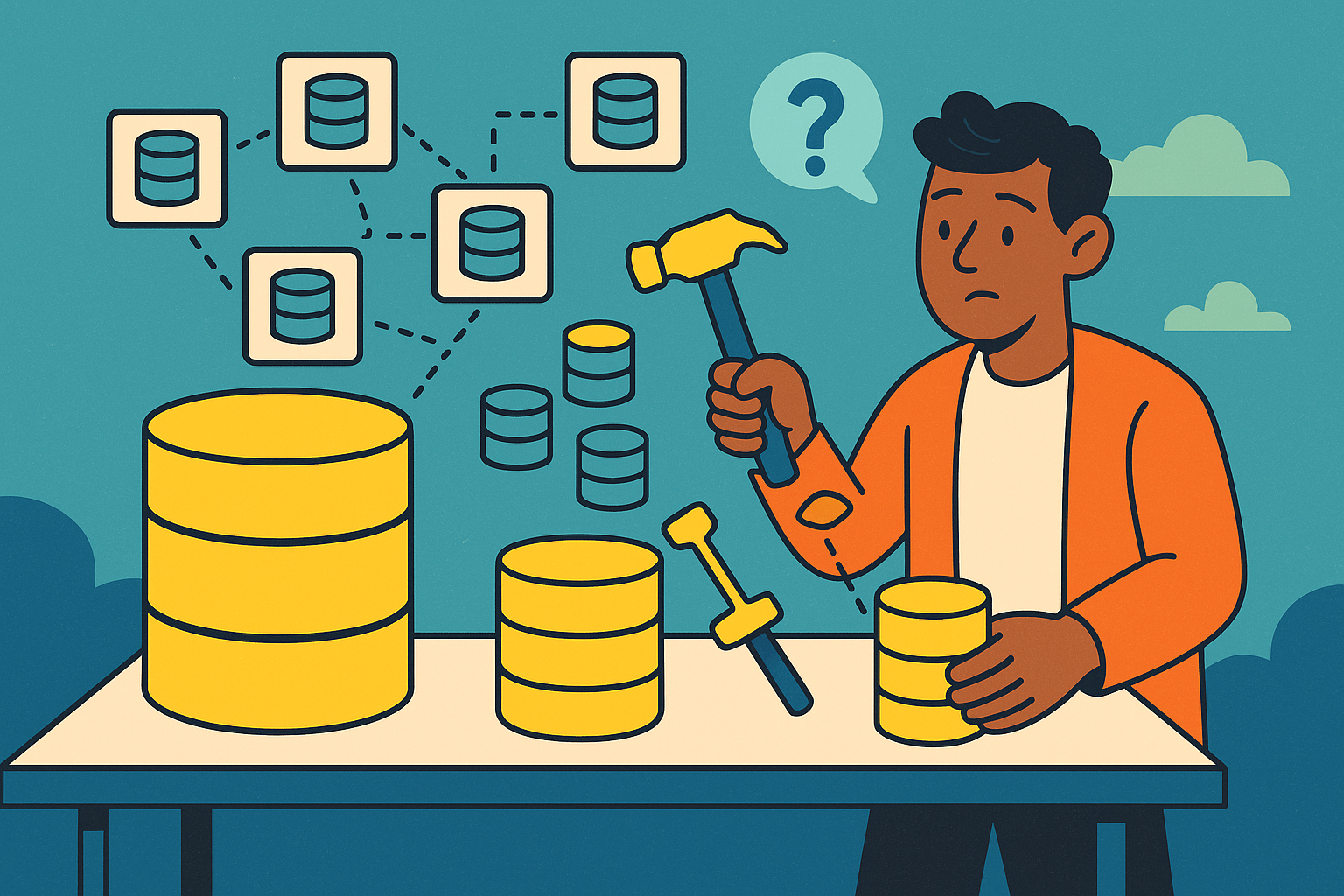The General Data Protection Regulation, commonly known as GDPR, has fundamentally reshaped the landscape of data privacy and protection across the European Union and beyond. The digital age has made it imperative for businesses to evolve and adapt their data-handling practices, and nowhere is this more evident than in the intricate world of data modeling. With data serving as the backbone of many modern businesses, understanding the pivotal role that data models play in ensuring GDPR compliance has never been more vital.
The Essence of GDPR in Data Management
In the vast universe of data management, GDPR emerges as the North Star, guiding businesses towards responsible and ethical practices. Introduced by the European Union, GDPR, at its heart, revolves around principles that serve both the individual's right to privacy and the broader need for data security in a digitized world.
The most fundamental of these principles is data minimization. While it might appear counterintuitive in an era marked by big data, it's a call to intentional and purposeful data collection. Rather than hoarding every bit and byte, organizations are urged to introspect: What data do they truly need? How does this data serve the user or the business? These reflective questions ensure that data collection remains tethered to genuine necessity rather than unchecked ambition.
Then there's the principle of accuracy, emphasizing the sanctity of data quality. In an interconnected digital ecosystem, inaccurate data doesn't just skew one system but has a cascading effect. Thus, GDPR mandates that organizations not only collect data accurately but also update or rectify inaccuracies promptly.
Storage limitation, another core tenet of GDPR, challenges the age-old practice of retaining data indefinitely. By setting clear boundaries on how long data can be stored, GDPR ensures that organizations regularly revisit their data repositories, removing outdated or irrelevant data.
Lastly, the principle of purpose limitation necessitates a clear intent behind every piece of data collected. It's a deterrent against the indiscriminate gathering of data without a clear objective, ensuring that data serves a clear, articulated, and legitimate purpose.
Data Models: The Blueprint of Data Management
To truly grasp the importance of data models, one must first envision the vast and intricate landscape of modern data ecosystems. From customer interactions on a website to complex AI-driven predictions, everything relies on data. However, this data isn't just a jumbled mess of numbers and strings. It's structured, categorized, and defined, and this is where data models come into play.
Data models serve as the architectural framework, defining how data is organized and how relationships between data entities are handled. It's akin to the blueprint of a building, where every room, hallway, and door has been meticulously planned. In the context of data, these "rooms" and "hallways" are tables, attributes, and relationships.
Moreover, in a world where data-driven decisions are paramount, the clarity offered by data models ensures that insights gleaned are accurate. Imagine trying to analyze data without understanding its structure or relationships. It's like trying to navigate a labyrinth in the dark. Data models light up this maze, offering a clear path to meaningful insights.
Furthermore, with businesses leveraging diverse technologies ranging from SQL databases to NoSQL storage and from data lakes to data meshes, a well-crafted data model becomes the common language. It ensures that whether it's a developer writing a new piece of code, a business analyst running a query, or a machine learning engineer training a new model, everyone is on the same page, working with a unified, cohesive understanding of the data.
Aligning Data Models with GDPR Principles
GDPR has brought a new layer of complexity to data modeling. Let's delve deeper into how data models can be designed in tandem with GDPR principles.
a. Data Minimization and Data Models
Data minimization, the act of limiting data collection to what's strictly necessary, aligns seamlessly with the discipline and precision inherent to data modeling. In the digital age, while the allure of collecting vast amounts of data is strong, it's the precision of well-defined data models that act as a beacon.
When crafting a data model with minimization in mind, questions arise: Is this attribute essential for our operations? Does collecting this data piece serve our stated purpose? These questions, reflected in the design of the data model, ensure that only pertinent data finds its way into the system. Such intentional design not only upholds the spirit of GDPR but also streamlines database performance and reduces unnecessary storage costs.
b. Accuracy and Data Models
Accuracy in data is akin to a compass's fidelity to the North. Without it, organizations can find themselves adrift in a sea of misinformation. Data models play a pivotal role in ensuring this accuracy. Through well-defined constraints, relationships, and validation rules embedded within the model, the data that enters the system adheres to predefined standards.
For instance, a data model might dictate that an email attribute must follow a specific format or that a date of birth entry cannot be set in the future. By setting these guidelines, data models serve as gatekeepers, ensuring that inaccuracies are caught and corrected at the source, a practice entirely in sync with GDPR's emphasis on accuracy.
c. Storage Limitation and Periodic Data Review
The impermanence of data's relevance is a key understanding that underlies GDPR. Not all data remains pertinent indefinitely. This understanding challenges organizations to be judicious about how long they retain data, and it's here that data models come to the fore.
A robust data model can incorporate temporal dimensions, automating the lifecycle of data. For instance, by associating a 'retention period' attribute with specific data entities, organizations can automate purges, ensuring data doesn't overstay its welcome. Furthermore, with the rise of sophisticated data platforms, data models can trigger periodic reviews, prompting data custodians to validate the continued relevance of certain data sets.
d. Purpose Limitation and Segregated Data Models
The final pillar, purpose limitation, is a call for clarity and specificity. Every piece of data should serve a clearly defined purpose, and this principle cascades into the very fabric of data models.
In crafting models that respect this principle, there's an emphasis on clear segmentation and categorization. Data models are designed to segregate data based on its intended use, ensuring clear boundaries that prevent cross-utilization. For example, data collected for marketing analytics won't inadvertently seep into systems designed for financial forecasting. Such clear demarcation in the data model ensures both compliance with GDPR and clarity in analytics.
Tools and Techniques for GDPR-Compliant Data Modeling
In the ongoing endeavor to align data modeling practices with GDPR, businesses find themselves at the intersection of regulatory compliance and technological innovation. As data landscapes grow more complex, so does the challenge of ensuring privacy and compliance. Fortunately, an array of tools and techniques has emerged, tailored to weave GDPR principles into the fabric of data modeling.
- GDPR-Specific Data Modeling Tools
Several software solutions on the market now cater directly to the GDPR-compliant data modeling niche. These tools go beyond traditional data modeling features, integrating GDPR-specific functionalities. For example, many of these tools offer metadata tagging, allowing modelers to flag attributes or entities that hold personal or sensitive data, making it easier to identify, manage, and protect in line with GDPR requirements. - Annotations and Meta-Data Enrichment
While metadata has always been a crucial aspect of data modeling, its importance is magnified in a GDPR context. By enriching data models with detailed annotations, organizations can provide context and clarity about data collection purposes, retention periods, or potential sensitivities. This kind of meta-information acts as a guide, ensuring that those handling the data, be it developers, analysts, or data stewards, are always cognizant of its GDPR implications. - Automated Data Lineage and Mapping
One of the challenges of GDPR is ensuring that personal data can be tracked throughout its lifecycle within an organization's systems. Advanced data modeling tools now offer automated data lineage features. These features visually map out the journey of data, highlighting its sources, transformations, and endpoints. Such visual representations make it easier for businesses to identify potential risk points and ensure that data rights, like the 'right to erasure,' can be effectively implemented. - Pseudonymization Techniques in Modeling
Pseudonymization, a process where personal data is processed in such a way that it can no longer be attributed to a specific data subject without additional information, is one of the techniques encouraged by GDPR. Modern data modeling tools facilitate this by allowing designs that automatically segregate identifiable information from other data, storing them separately, and using pseudonyms or tokens to link them. This ensures that the utility of the data remains, while reducing the risks associated with potential data breaches. - Model Versioning and Audit Trails
Ensuring GDPR compliance isn't a one-time task; it's an ongoing commitment that requires businesses to adapt and evolve. Contemporary data modeling tools recognize this dynamic nature and offer model versioning and audit trails. This allows organizations to track changes made to the data model over time, ensuring that any deviations or modifications remain compliant with GDPR requirements. It also offers transparency, a key tenet of GDPR, by maintaining a clear record of how data structures have evolved.
Ongoing Evolution of GDPR and Data Models
The relationship between GDPR and data models is not static. As GDPR requirements evolve, driven by new case studies, legal challenges, and technological advancements, so must data models. This continuous feedback loop ensures that businesses remain ahead of the curve, adapting and refining their practices in the ever-shifting sands of data privacy regulations.
Charting the Confluence: Data Models in the GDPR Era
In the ever-evolving realm of data management, the alignment of data models with GDPR principles has emerged as a compelling narrative. No longer are data models mere technical schematics; they're potent instruments of trust, compliance, and ethical responsibility.
The onset of GDPR has spotlighted the pressing need for organizations to introspect, not just on how they collect or use data, but also on how they architect their data's very foundation. As businesses navigate the intricacies of data protection regulations, it's evident that data models play a pivotal role, serving as the bedrock upon which GDPR compliance is constructed.
Moreover, in this digital age where data-driven decisions mold business trajectories, it's crucial to remember that the integrity of these decisions hinges on the sanctity of the underlying data models. When these models are aligned with GDPR, they don't just ensure compliance; they elevate the very essence of data-driven decision-making. They ensure that every insight, every analysis, and every business move is rooted in both technical accuracy and ethical responsibility.
The interplay of tools and techniques, designed for GDPR-compliant data modeling, underscores a broader theme – the symbiotic relationship between technological innovation and regulatory compliance. As data continues to burgeon and technologies evolve, GDPR stands as a testament to the fact that progress and privacy are not mutually exclusive but can, in fact, propel each other forward.
As we stand at the confluence of data models and GDPR, it’s clear that the future of data management is not just about volume, velocity, or variety, but about forging a path that upholds the principles of privacy, integrity, and transparency. In this journey, data models, aligned with GDPR, will undoubtedly serve as the compass guiding businesses towards a future where data is both an asset and an emblem of trust.
 is now
is now


